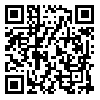BibTeX | RIS | EndNote | Medlars | ProCite | Reference Manager | RefWorks
Send citation to:
URL: http://hdq.uswr.ac.ir/article-1-105-en.html

 , Hashem Shemshadi2
, Hashem Shemshadi2 
 , Mohammad Javad Moradian3
, Mohammad Javad Moradian3 
 , Shokoufeh Ahmadi1
, Shokoufeh Ahmadi1 
 , Lila Malkyan4
, Lila Malkyan4 
 , Samaneh Sabzalizadeh
, Samaneh Sabzalizadeh 
 5
5
2- Department of Clinical Sciences, University of Social Welfare and Rehabilitation Sciences, Tehran, Iran.
3- Department of Disaster Public Health, School of Public Health, Tehran University of Medical Sciences, Tehran, Iran.
4- Department of Nursing, Faculty of Nursing and Midwifery, Bam University of Medical Sciences, Bam, Iran
5- Health Technology Office, Vice Chancellor for Research & Technology, Univereity of Social Welfare and Rehabilitation Sciences, Tehran, Iran. , alizade.samaneh@gmail.com
Background: Identification of the effective factors in reducing response time in prehospital emergency medical service (EMS) can assist in improving its services. This study aimed at reviewing the effect of applying global positioning system (GPS) on response time of Tehran EMS ambulances.
Materials and Methods: Of 132 Tehran EMS stations, 24 ones were randomly selected, and relevant data, including the response time of all missions in 2009 (without GPS) and in 2011 (with GPS) as well as number of daily calls to each dispatch center were extracted. The average number of daily calls in the call centers were categorized into 3 groups as follows: I) ≤10 calls, II) 10 to 15 calls, and III) >15 calls. The statistical analysis of the obtained data was carried out by paired t test.
Results: The findings revealed that the average response times in 2009 for the 3 groups (I, II, and III) were 10.11, 11.25, and 10.92 minutes, respectively. These times recorded for groups (I, II, and III) in 2011 were 9.86, 10.71, and 11.58 minutes, respectively, which were significantly less than the response times recorded in 2009 (P<0.001).
Conclusion: This research has demonstrated that the application of GPS in the ambulances may be essential in the reduction of response time, especially in emergency stations with more average mission numbers
Received: 2015/11/25 | Accepted: 2016/02/14 | Published: 2016/04/1
| Rights and permissions | |
 |
This work is licensed under a Creative Commons Attribution-NonCommercial 4.0 International License. |





